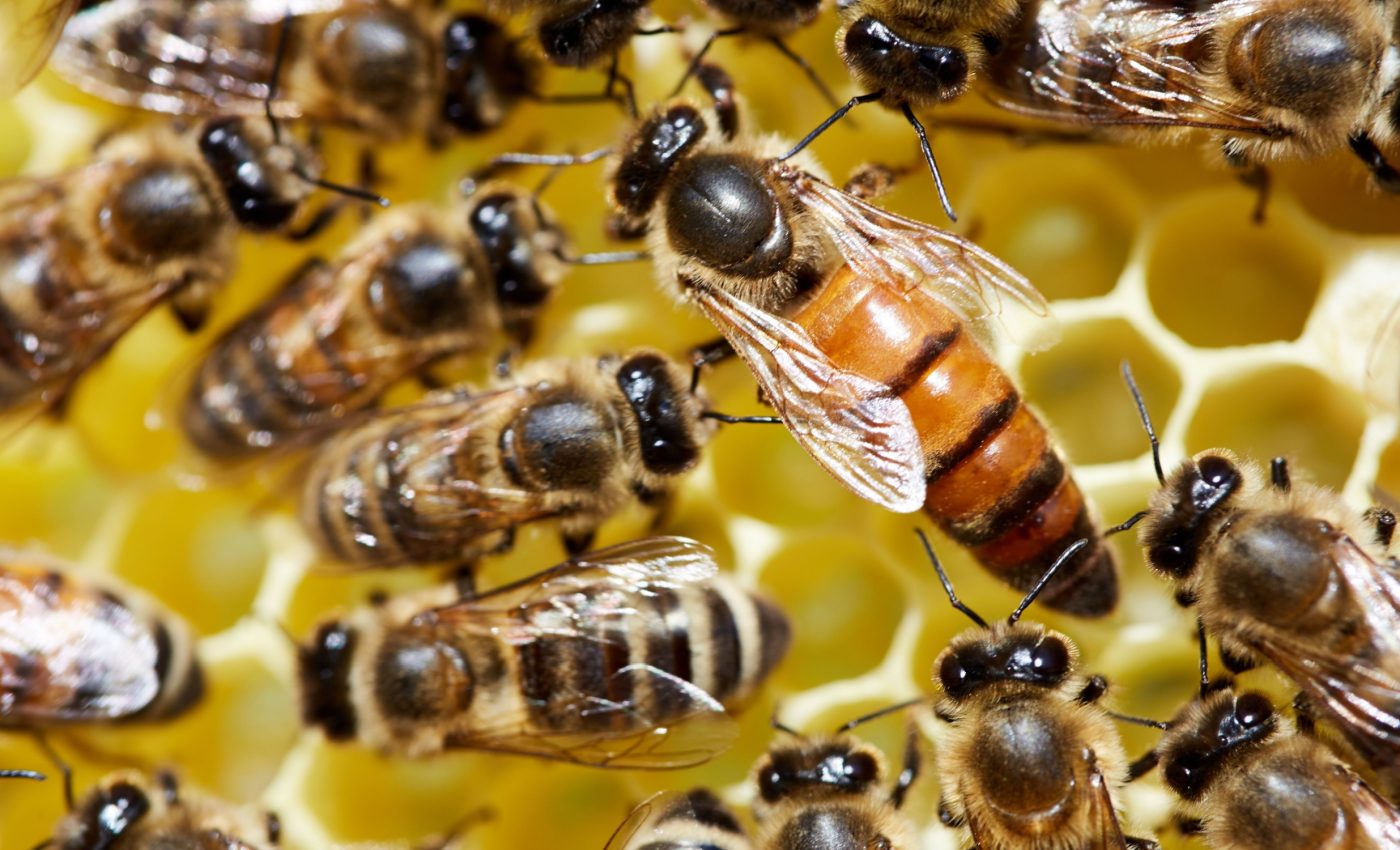
Parental genes affect whether a bee becomes a queen or a worker
Female honey bees inherit genes from their father and mother (the queen), but they don’t all end up playing the same role.
Some female bees end up becoming queens that reproduce, while others become workers that never lay eggs, and spend their lives caring for their sisters. What causes this dramatic difference?
New research points to a tug-of-war between parental genes, with mother’s and father’s genes pulling the developing bee larva in different directions.
The role of parental genes in a bee’s fate
Scientists at Penn State have identified the molecular mechanism that tips the balance between queen and worker. The study reveals how the bee’s parents’ genes literally compete during a critical window of development.
“Imagine if your mother’s genes and your father’s genes were in constant disagreement about how you should develop – that is essentially what genomic imprinting is, and we see that it happens across the tree of life: from honey bees to humans,” explained Sean Bresnahan, lead author of the study.
“We found that this genetic ‘argument’ can be detected during a critical developmental window where a honey bee larva becomes either a queen or a worker.”
That window slams shut just 192 hours after the egg is laid. By then, the bee’s genes lock it into its destiny.
Exploring differences in bee genes
To study the differences between the genes inherited from the mother bee (matrigenes) and those from the father bee (patrigenes), the researchers used a technique called instrumental insemination. It allowed them to control which queen mated with which drone.
The team then tracked how gene expression varied in the resulting bee larvae by analyzing RNA – the molecules that carry instructions from DNA to make proteins – and comparing gene activity based on whether it came from mother or father.
“We found patrigenes were expressed at higher levels in queen-destined larvae, and matrigenes were expressed at higher levels in worker-destined larvae,” Bresnahan said.
A tug-of-war between bee genes
The team didn’t stop there. They wanted to know what these parent-specific genes were actually doing. By analyzing the cellular pathways that the genes influenced, they spotted a clear pattern.
“We saw a striking match between the expression of matrigenes and patrigenes in the same pathway,” noted Bresnahan.
“If a matrigene had increased expression then a patrigene would have decreased expression in the same pathway, or vice versa, showing that the two genes were working against each other.”
“If one gene showed parent-specific expression, another gene in the same pathway showed parent-specific expression from the opposite parent.”
So it wasn’t just random. The maternal and paternal genes seemed to be locked in direct opposition, battling over the bee’s fate.
Not DNA methylation this time
In many animals and plants, the mechanism that drives this kind of genetic conflict is a process called DNA methylation. It adds chemical tags to DNA that affect whether genes are turned on or off.
But in honey bees, previous research had shown that methylation doesn’t play this role. So the team looked at another possibility: histones.
DNA isn’t just floating around loose in cells. It’s wound tightly around proteins called histones, forming a structure known as chromatin. The shape and structure of chromatin help regulate which genes are accessible and active.
Changes to histone proteins – through chemical tags placed on them – can also affect gene expression without altering the DNA itself.
Bee genes are affected by histones
Using a technique developed by study co-author Shaun Mahony, the researchers targeted histone-bound DNA. They isolated and analyzed the tagged histone proteins and the DNA they interacted with.
“We found that, in honey bees, parent-of-origin expression is regulated by histone modifications,” Bresnahan said.
This means chemical changes to histones – not the DNA itself – help determine which parental genes are active. And those gene activities ultimately decide if a larva will become a queen or a worker.
“What we’re seeing in honey bees isn’t actually that unusual when you take a step back – histone-based mechanisms for parent-of-origin effects are more widely utilized across the tree of life than DNA methylation-based systems,” explained Bresnahan.
“We see these chromatin-mediated imprinting mechanisms in flowering plants and in placental mammals as well. So, honey bees, and maybe other social insects, might be using the more ancestral toolkit for mediating these genetic conflicts,” he stated.
Why this research matters
Understanding how this parental conflict works could have real-world implications. For example, it might lead to new ways to breed bees with desired traits, such as resilience or productivity.
Christina Grozinger, co-author on the study, said her lab plans to explore how these genetic dynamics affect behaviors like nursing, where some worker bees specialize in caring for young.
The project also has reach beyond insects. Bresnahan now studies how genetic conflict shapes traits in humans – especially those related to maternal-child health during pregnancy.
“The skills I developed studying parent-of-origin effects translate directly to my current studies of maternal-child health mediated through the placenta,” Bresnahan said.
“I am particularly interested in parent-of-origin gene expression associated with placenta-mediated traits, like early-life programming of metabolic and neuropsychiatric disease risk, that could help us better understand pregnancy complications and offspring health outcomes.”
This study peels back another layer in the mystery of how similar DNA can lead to dramatically different lives – whether in bees, humans, or plants. And it reminds us that the story of inheritance is not just about what genes we get, but also about which ones win the argument.
The full study was published in the journal Genome Biology.
—–
Like what you read? Subscribe to our newsletter for engaging articles, exclusive content, and the latest updates.
Check us out on EarthSnap, a free app brought to you by Eric Ralls and Earth.com.
—–













